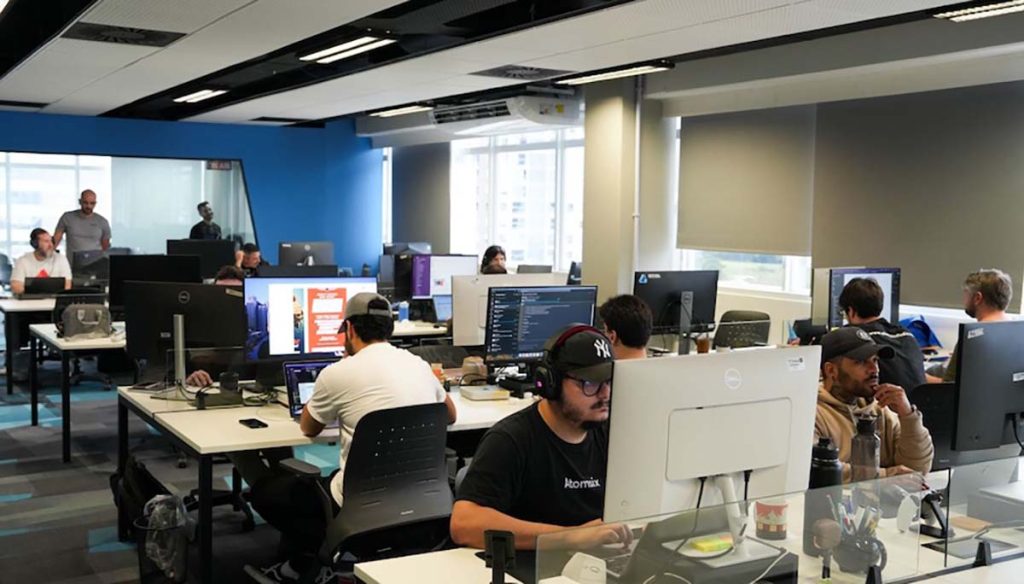For decades, Silicon Valley has been synonymous with technology, disruption, and billion-dollar startups. But in recent years, a new perspective has emerged: the Valley as a laboratory of the creative economy applied to business: a model that combines design, empathy, and technology to generate innovation with purpose.
According to the Global Innovation Index 2025, published by the World Intellectual Property Organization (WIPO), the United States ranks third globally in innovation, behind only Switzerland and Sweden. This performance is driven by factors such as an entrepreneurial culture, investment in R&D, and collaboration among companies, universities, and creators — all pillars of what’s known as the creative economy.
In Brazil, this concept is also gaining traction. Data from the Federation of Industries of Rio de Janeiro (Firjan) show that the creative industry already represents 3.59% of the national GDP, generating R$393.3 billion in 2023. The sector spans design, technology, audiovisual production, communications, fashion, and gaming, growing faster than the country’s formal economy.
For Guilherme Ferreira, CEO of Atomsix, a global design and technology studio with projects for Google, Stanford, and HP, Silicon Valley’s greatest lesson for Brazil is how to turn creativity into a structure for continuous innovation. “The difference is treating creativity as a method, not as coincidence. Innovation requires process, active listening, and empathy for the user — and that’s what many Brazilian companies are missing”.
In the United States, design thinking (a human-centered approach to innovation) has become part of the corporate routine. This mindset has helped companies develop digital experiences that are intuitive and emotionally engaging.
Atomsix applied similar principles in a retail project: by simplifying the purchase flow and using data to personalize product recommendations, the company achieved a 40% increase in conversion rate and a 30% increase in average session time. “Solving the user’s real problem, and making them feel valued, is what creates loyalty. It’s digital with the soul of a neighborhood store,” Ferreira explains.
This integration lies at the heart of the new economy. Consulting firm Accenture estimates that by 2026, companies adopting generative artificial intelligence will grow 2.4 times faster than their competitors. When combined with empathy and design, AI enables companies to personalize experiences, optimize processes, and scale creative ideas with tangible impact.

The role of the creative economy in the future of business
If in Silicon Valley open innovation has fueled collaboration between startups, universities, and major corporations, in Brazil this model is beginning to flourish in creative hubs such as Florianópolis, Recife, and São Paulo. “The creative economy is the meeting point between art, technology, and strategy. It’s what gives innovation its identity,” says Ferreira.
According to him, the biggest challenge for Brazilian companies is to systematize creativity, transforming it into a sustainable competitive advantage. That means investing in multidisciplinary teams, a culture of experimentation, and accessible, personalized digital experiences.
With the rise of artificial intelligence, automation, and digital platforms, the next step is to merge creativity and data at scale. “AI can help design interfaces and products in real time, but it’s the human touch that ensures the experience makes sense. In the end, technology without sensitivity is just code,” Ferreira concludes.
About Atomsix
Atomsix is a global design and technology studio focused on innovation and excellence. Founded in 2020, with offices in Orlando (USA) and Florianópolis (Brazil), the company reflects over two decades of international experience accumulated by its founder, Guilherme Ferreira.
Before launching Atomsix, Ferreira had already led award-winning digital projects for brands such as Mercedes-Benz, Google, and Microsoft, including apps recognized by Apple as “App of the Year”. Today, Atomsix serves more than 350 companies in 23 countries, delivering cutting-edge digital solutions including mobile apps, web platforms, websites, and branding.
Combining creativity, attention to detail, and agility, Atomsix brings Silicon Valley’s know-how to democratize access to technological innovation in Brazil.







